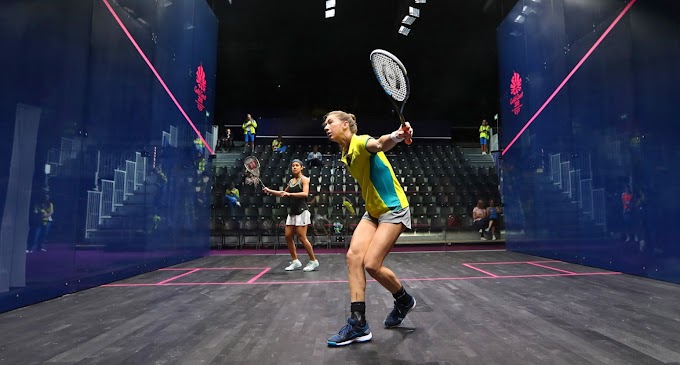Rowing sports, often referred to as crew, are water-based activities that involve propelling a boat using oars. It's a challenging yet rewarding sport that offers both physical and mental benefits. In this article, we'll delve into the fascinating world of rowing, covering its history, techniques, famous events, equipment, training, safety tips, and more.
Overview of Rowing Sports
Rowing sports encompass a variety of disciplines, including sculling, sweep rowing, and coastal rowing. Each form has its unique characteristics and challenges, attracting enthusiasts from around the globe.
Benefits of Rowing Physical Benefits
Rowing provides a full-body workout, engaging muscles in the arms, legs, back, and core. It improves cardiovascular health, enhances strength, and promotes weight loss.
Mental Benefits
Engaging in rowing sports promotes mental well-being by reducing stress, improving mood, and enhancing cognitive function. The rhythmic motion of rowing fosters relaxation and mindfulness.
History of Rowing Early Origins
Rowing dates back thousands of years, with evidence of rowed vessels found in ancient civilizations such as Egypt, Greece, and Rome. It was initially used for transportation and warfare before evolving into a recreational and competitive sport.
Modern Developments
In the 19th century, rowing gained popularity in Europe and North America, leading to the formation of rowing clubs and the establishment of formal competitions. The sport continued to evolve with advancements in equipment and training techniques.
How many types of Rowing are?
Sculling
Sculling involves rowing with two oars, one in each hand. It requires balance, coordination, and precise technique. Sculling is commonly practiced in single, double, and quadruple sculls.
Sweep Rowing
Sweep rowing utilizes a single oar held with both hands. Rowers compete in teams, with each member rowing on one side of the boat. Sweep rowing is featured in events such as eights, fours, and pairs.
Coastal Rowing
Coastal rowing takes place on open water, such as lakes, rivers, or oceans. It requires endurance and adaptability due to variable conditions like waves, currents, and wind.
Rowing Techniques For best Start
Stroke Technique
The stroke technique involves a sequence of movements, including the catch, drive, finish, and recovery. It requires coordination between the rower's arms, legs, and torso to generate power efficiently.
Recovery Technique
The recovery phase is crucial for maintaining momentum and balance. Rowers glide the oars over the water while returning to the starting position, preparing for the next stroke.
Catch Technique
The catch is the beginning of the stroke, where the oar enters the water. It's essential to maintain a stable body position and proper blade placement to maximize efficiency and prevent injury.
Famous Rowing Events
World Rowing Championships And rowing Game
The World Rowing Championships bring together elite rowers from across the globe to compete for titles in different disciplines and age groups. It's a pinnacle event in the rowing calendar, attracting large audiences and media coverage.
Olympics
The Olympic Games feature rowing competitions in various categories, including singles, doubles, pairs, fours, and eights. It's a prestigious event that showcases the world's top rowing talent.
Henley Royal Regatta
The Henley Royal Regatta is one of the oldest and most prestigious rowing events in the world. Held annually on the River Thames in England, it features head-to-head races between top rowing clubs and universities.
Which Equipment required for Rowing
Boats
Rowing boats, also known as shells, come in various designs optimized for different rowing disciplines and water conditions. They range from sleek racing shells to stable recreational boats.
Oars
Oars are essential tools for rowing, providing leverage and propulsion. They vary in length, blade shape, and materials, such as wood, carbon fiber, or composite materials.
Clothing
Rowers wear specialized clothing designed for comfort, flexibility, and protection from the elements. It typically includes spandex shorts, moisture-wicking shirts, and layers for warmth.
Rowing Training And engageing
Endurance Training
Rowers engage in endurance training to build cardiovascular fitness and stamina. Training sessions may include long-distance rowing, steady-state workouts, and interval training.
Strength Training
Strength training focuses on developing the muscles used in rowing, such as the legs, back, and core. Exercises may include weightlifting, bodyweight exercises, and resistance training.
Technique Work
Technique drills help rowers refine their stroke mechanics, timing, and coordination. Coaches provide feedback and guidance to improve efficiency and performance on the water.
Rowing Safety Tips Rowers should be aware
Weather Awareness
Rowers should be aware of weather conditions and forecasts before heading out on the water. Strong winds, currents, and inclement weather can pose risks to safety.
Equipment Checks
Before each rowing session, it's essential to inspect equipment for any signs of damage or wear. This includes boats, oars, life jackets, and safety gear.
Hydration and Nutrition
Proper hydration and nutrition are vital for sustained performance and recovery. Rowers should drink plenty of water and consume balanced meals with carbohydrates, proteins, and healthy fats.
Conclusion
Rowing sports offer a unique blend of physical activity, skill, and camaraderie. Whether you're a novice or seasoned rower, there's always something new to learn and experience on the water. Embrace the challenge, enjoy the journey, and discover the joys of rowing.
FAQs People also ask
How many types of rowing are there?
There are three main types of rowing: sculling, sweep rowing, and coastal rowing.
What are the health benefits of rowing?
Rowing provides a full-body workout, improves cardiovascular health, enhances strength, and promotes weight loss.
How old is the sport of rowing?
Rowing has ancient origins dating back thousands of years, evolving from a means of transportation to a recreational and competitive sport.
What equipment do I need for rowing?
Essential rowing equipment includes boats, oars, clothing, and safety gear such as life jackets and helmets.
Are there any safety tips for rowing?
Yes, rowing safety tips include weather awareness, equipment checks, and proper hydration and nutrition.
Can rowing help with weight loss?
Yes, rowing is an excellent form of exercise for weight loss, as it burns calories, builds muscle, and improves cardiovascular fitness.









Feel free to let me know if any question